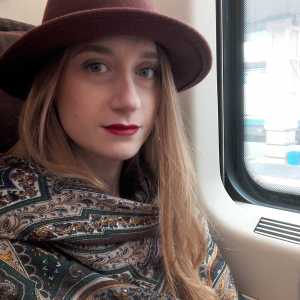WISSPER - Women’s Impact on Silent Screen PErformance Reloaded
- Supervisor: Prof. Dominique Nasta
- Research center: CiASp, centre de recherche en Cinéma et Arts du Spectacle de la faculté de Lettres, Traduction & Communication (LTC)
- Research start date: 15.10.2021
Description
This project focuses on the study of women’s contribution to the improvement of European screen acting, both as theory and practice, during the silent era (namely between 1895 and 1930). The acronym “WISSPER”, suggests that women’s influence as acting theorists so far has been reduced to a “whisper” by traditional film historiography. The word "reloaded" indicates that the notion of women's contribution, in this respect, should be reworked; at the same time it echoes the famous volume “The Cinema of Attractions Reloaded” (edited by Wanda Strauven, 2006), as a milestone in film historiography.
The principal aim of this research is to evaluate and valorize the impact of migrating European actresses-dancers on the theory and practice of screen acting, internationally, especially through choreographic conceptions and embodiments.
As “The Women and Film History International” organization and “The Women Film Pioneers Project” have being demonstrating from 1993 onwards, hundreds of women worked in the silent film industry, not only as actresses, but also as directors, editors and more. However, while their contribution to film industry as actresses is evident, so much has to be done yet about their role in other departments and for the development of acting techniques.
Significantly, many of them were former dancers who conceived innovative choreographies and dance concepts, like Loïe Fuller, Ruth St. Denis and Isadora Duncan, who directly or indirectly influenced the film industry and perhaps are the best known of their category, but all Americans.
Actually, in the same period, in Europe there were dancers-actresses like Stacia Napierkowska and Ileana Leonidoff, who promoted their peculiar dance ideas and acting styles on screen. Yet their role in the film industry is nowadays still underrepresented or misrepresented.
To develop this project, Uffreduzzi will select some case studies of European iconic actresses-dancers who migrated from a European country to another for professional reasons and/or moved to the US during their career and for each of them she will analyze the most iconic dance scenes and their acting style features, through the comparison with the main concurrent choreographic and gestural models.
Biography
Elisa Uffreduzzi is an Italian film scholar. She has achieved her PhD at the University of Florence (Italy) and her principal field of expertise is silent cinema.
In 2017 she published the book "La danza nel cinema muto italiano" (Aracne ed.), about dance in Italian silent cinema.
In 2018 she achieved the ASN (National Scientific Qualification) as Associate Professor for the competition sector: 10/C1 (Film studies et al.).
From 2018 to 2021 she has collaborated with the University of Rome “Tor Vergata” and from 2019 to 2021 she has worked for the national film archive (Cineteca Nazionale, Rome), participating in the project of the Ministry of Culture "Cinecensura.com", about Italian film censorship.
Publications
Her major publications include:
Books
3. forthcoming: Resounding Whispers: The Impact of Women on Silent Screen Performance. Turin: Kaplan, 2024.
2. forthcoming: Il buio oltre la siepe, Roma, Gremese, 2024.
1. La danza nel cinema muto italiano. Canterano (RM): Aracne, 2017.
Book Chapters (peer reviewed)
3. “Chorégraphies modernes et danses apaches dans le cinéma muet italien”, in Le Cinéma muet italien à la croisée des arts, Céline Gailleurd (dir.), ArTeC - les presses du réel, 2022; 138-159.
2. Dance and Futurism in Italian Silent Cinema, in “Futurist Cinema. Studies on Italian Avant-garde Film”, edited by Rossella Catanese. Amsterdam: Amsterdam University Press, 2017; 89-101.
1. Mambo and Maggiorate: Italian Female Stardom in the 1950s, in “Writing and Performing Female Identity in Italian Culture”, edited by Virginia Picchietti & Laura A. Salsini. New York: Palgrave Macmillan, 2017; 61-80.
Book Chapters (reviewed by the Editor/s)
5. “Via Veio come Hollywood, o del musical all’italiana”, in La Cines Pittaluga e le altre. Modelli di produzione cinematografica tra le due guerre, edited by Daniela Felisini, Luca Mazzei and Donatella Orecchia. Torino: Edizioni Accademia, 2022 (219-251).
4. “Camille De Morlhon tra danza, commedia e pantomima”, in Marcello Seregni ed., L'immagine colore. “Le fer à cheval”, un film Pathé (Dublin, Rep. of Ireland: Artdigiland, 2016); 77-81.
3. “Tango, tangueras e seguidoras. ‘Passi falsi’ nel cinema muto italiano”, in Lucia Cardone & Chiara Tognolotti, eds., Imperfezioni. Studi sulle donne nel cinema e nei media (Pisa: ETS, 2016); 201-210.
2. “I fantasmi del palcoscenico. Orientalismo e teatro”, in Edoardo Becattini ed., Cuore di tenebra. Il cinema di Dario Argento (Pisa: ETS, 2015); 51-56.
1. “Un cantastorie dietro la macchina da presa. I documentari”, in Marco Luceri & Luigi Nepi eds., L’uomo dei sogni. Il cinema di Giuseppe Tornatore (Pisa: ETS, 2014); 87-90.
Journal Essays (peer reviewed)
5. “Tarantella Dance in Early Cinema: A Pillar of Neapolitan Urban Architecture”, Nineteenth Century Theatre and Film, (August 2019), doi: 10.1177/1748372719865552.
4. “Dancing phantoms: The Cinematic Representation of the Subconscious through Choreographic Embodiments”, Immagine – Note di Storia del Cinema, IV series, No. 18, July-December 2018, special issue edited by Mireille Berton and Silvio Alovisio, pp. 117-143.
3. “Marcello Mastroianni doppiato da Alberto Sordi: Golia vs Golia”, Immagine – Note di Storia del Cinema, IV series, No. 17, January-June 2018, pp. 119-140.
2. “I ‘balli russi’ nel cinema muto italiano”, Immagine – Note di Storia del Cinema, No. 9 (2014): 45-78.
1. “Orientalismo nel cinema muto italiano. Una seduzione coreografica”, Cinergie. Il cinema e le altre arti, n.s., no. 3, March 2013, pp. 20-30 (available at http://www.cinergie.it/?p=2295).
Journal Essays (reviewed by the Editor/s)
7. “Tanghi, valzer e mazurche” (pp. 199-201); “Mambi, bajon e rumbe” (pp. 203-205), «Quaderni del CSCI. Rivista annuale di cinema italiano», n. 15, 2019.
6. “‘Not Like Other Girls’: Gender Representation Across Florence Lawrence Characters”, Film Studies, No. 6 (2018), section of the issue: “Women and Silent Screen: International Perspectives”, (Chinese language, translation by Tian Shuo, Master of Shanghai Theatre Academy): 55-63.
5. invited essay: “Danse et orientalisme dans le cinéma muet italien”, Images secondes. [online journal], No. 01, 2018, uploaded on June 28, 2018 (available at http://imagessecondes.fr/index.php/2018/06/28/danse-et-orientalisme-dans-le-cinema-muet-italien).
4. “Doris Duranti” (pp. 215-216); “Carlo Lizzani” (pp. 222-223); “Achtung! Banditi!” (p. 240); “La Battaglia di Algeri”(pp. 245-246), Quaderni del CSCI, No. 12, 2016.
3. “Tetti, strade e condomini: l’abitare collettivo nel cinema italiano del dopoguerra / Rooftops, streets and blocks: the ‘collective living’ in the Italian post-war cinema”, Firenze architettura, Vol. XX, No. 1, 2016, pp. 24-29.
2. “Francesca Bertini” (277-278) and “Echi. Antologia di pensieri e riflessioni delle protagoniste del passato: ‘Miss, mia cara Miss…’” (326-329), Quaderni del CSCI, No. 11 (2015), Storie in divenire: le donne nel cinema italiano, edited by Lucia Cardone, Cristina Jandelli and Chiara Tognolotti.
1. “The ‘Urban Theatre’, In Gillo Pontecorvo’s Algiers”, Cinemascope, Indipendent Film Journal Vol. VII, No. 16, July-December 2011, Landscape of Revolt (http://www.cinemascope.it/).
Conference Proceedings
2. Dance’s Reading Glass. The Depiction of Women Onscreen in Stacia Napierkowska’s Choreographic Performances, in Àngel Quintana, Jordi Pons (eds.), The Visible Woman. On-Screen Presences of Femininity. 1895-1920, pp. 109-119. Proceedings of the 12th International Seminar on the History and Origins of Cinema, Girona, Fundació Museu del Cinema-Collecció Tomàs Mallol-Ajuntament de Girona, 2020.
1. “‘Not Like Other Girls’: Gender Representation Across Florence Lawrence Characters”, in The Women and the Silent Screen IX, Conference proceedings. Beijing: China Film Press, 2018, 12-21. (Chinese language: translation by Tian Shuo, Master of Shanghai Theatre Academy).

